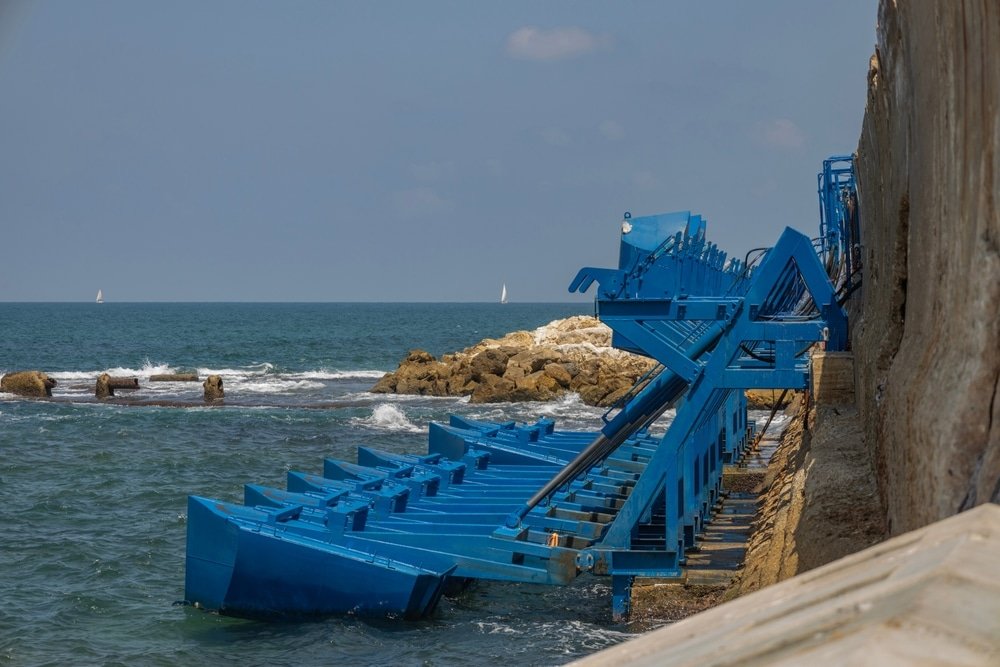As the Philippines continues to grapple with energy supply shortages, the need for innovative and sustainable energy solutions has never been more pressing. One area that holds tremendous promise is tidal energy, a form of renewable energy that harnesses the power of ocean waves to generate electricity.
This limitless source of power has the potential to become one of the main providers of sustainable energy in the Philippines, the world’s fifth-largest island country. And with a tidal power plant set to be built in Samar, it’s high time Filipinos ride the wave of this alternative energy source.
What is Tidal Energy?
Tidal energy is a branch of hydropower that converts the kinetic energy of ocean waves into electricity. Unlike traditional hydropower, which relies on dams and gravity to generate energy, tidal energy uses the motion of the ocean to produce electricity. This makes it an ideal source of renewable energy, as the ocean’s tides are both predictable and constant.
Predictable Power
Tidal energy is reliable. The movement of the sun and moon are cyclical, meaning that the flow and strength of tides can be predicted for the next 18 years. This makes it a more stable source of renewable energy compared to others such as solar and wind, which are dependent on weather conditions. This predictability makes it easier to plan and manage energy production, making it an attractive option for powering communities.
Steady Supply
Where the amount of sunlight and the amount of rainfall needed to fill dams are very much affected by climate change and variations in the world’s weather patterns, the ocean’s tides are cyclical, providing a constant supply of energy.
How Does Tidal Energy Work?
The process involves harnessing the kinetic energy of tidal streams through turbines installed in areas with considerable tidal flow. These turbines spin as the tides pass through them, generating mechanical energy which is then converted into electrical energy using generators. The electricity produced is then transmitted through a submarine cable to substations on land and distributed to consumers.
Why Haven’t We Seen a Lot of Tidal Power Plants Globally?
In terms of technology, tidal energy has traditionally lagged behind solar and wind power generation. However, recent developments in the field have made it more viable. Sites with lower than optimum tide flow velocity can now be used to create electricity, significantly increasing its potential. This means that even areas with relatively weaker tides, such as coral reefs or protected marine areas, can now be utilized for sustainable energy production.
This is not such a problem for the Philippines, however, as the country has numerous sites ideal for tidal energy generation. One such location is in Samar, where Southeast Asia’s first-ever tidal power plant is set to rise.
Why Samar?
The potential for tidal energy in the Philippines is immense, especially in the San Bernardino Strait, the gap that separates Samar Island from the Bicol region. This area has the strongest tidal flow in the eastern part of the country, making it an ideal site for the tidal energy project.
The area also has communities that will benefit most from such a project. The initial beneficiary of this tidal power plant will be the small island of Capul, located in the northern part of Samar. This island currently relies solely on diesel generators for electricity, only providing power for 8 to 16 hours a day. With the introduction of tidal energy, the island’s power needs will be met sustainably, providing electricity for longer hours and shifting their dependence to much greener energy sources.
Is Tidal Power Really Green?
Of course, with any development project, there are concerns about its impact on the environment. And tidal power simply hasn’t been studied as much as other alternative energy sources such as solar and wind power. Globally, tidal energy experts have considered this and have collaborated with conservationists to conduct comprehensive studies on the potential impact of tidal power plants on marine life. This includes monitoring equipment to track the movements of marine species, such as whale sharks and stingrays, to ensure their safety. The same must be done in the San Bernardino Strait location.
Is Tidal Energy Worth It?
It is important to remember that this project is also about empowering communities. The introduction of tidal energy in Capul will not only provide a stable source of electricity but also create job opportunities for locals. This can pave the way for more sustainable development in other remote areas of the country, reducing dependence on fossil fuels and improving the lives of its residents. So yes, it is worthy of widespread consideration. As the saying goes, a rising tide lifts all boats. Everyone benefits from the success of a tidal power project in Samar – not just the Capul residents and Filipinos across the country, but the entire Southeast Asian region.
The introduction of tidal energy in the Philippines is a significant step towards a greener and more sustainable future. With its reliability, potential, and positive impact on communities, as well as the potential zero impact on the environment, tidal power can truly be a game changer for the country in its quest for energy security.


